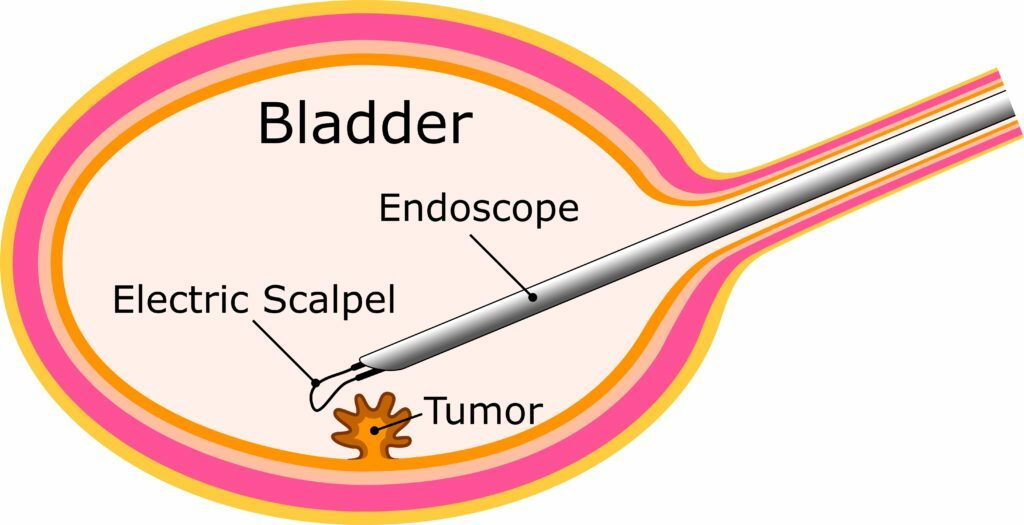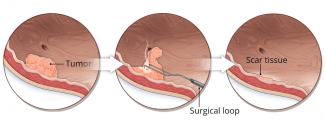Transurethral Resection of Bladder Tumour
Overview:
Transurethral Resection of Bladder Tumour (TURBT) is a surgical procedure used to diagnose and treat bladder tumours. It is a minimally invasive procedure in which a resectoscope, a specialized instrument with a camera and a cutting device, is inserted through the urethra to access the bladder. Dr Menogue can then remove or biopsy abnormal tissue, such as tumours, for further examination.
Purpose:
TURBT serves several purposes:
- Diagnosing bladder tumours and determining their characteristics.
- Removing or biopsying abnormal bladder tissue.
- Treating non-invasive bladder tumours.
Before the Procedure:
- Medical Evaluation: You will undergo a comprehensive medical evaluation to assess your overall health and fitness for the procedure.
- Medications: Inform Dr Menogue’s team about all medications, supplements, and allergies you have. Adjustments to your medications may be needed – especially blood thinning medication.
- Fasting: You will need to fast (not eat or drink) for a specified time before the procedure. The hospital where you are having your operation will provide these details to you on the day prior to surgery
- Transport: Arrange for someone to drive you to the hospital on the day of the procedure.
During the Procedure:
- Anaesthesia: TURBT is typically performed under general anaesthesia, meaning you will be asleep throughout the procedure.
- Resectoscope Insertion: The resectoscope is inserted through your urethra into the bladder.
- Tissue Removal: Using the resectoscope’s tools, Dr Menogue removes or biopsies abnormal tissue.
- Catheter: An indwelling catheter will be placed in your urethra and bladder during the procedure. This will still be in place when you wake up and usually stays in for 48 hours to clean your bladder and help stop bleeding issues
- Recovery Area: After the procedure, you will spend time in the recovery area as the anesthesia wears off before being transferred to the ward for overnight stay
After the Procedure:
- Recovery: You might experience discomfort, mild bleeding, or increased urinary frequency, which are usually temporary.
- Hospital Stay: TURBT often requires a 2 night hospital admission
- Rest and Activity: Balance rest with light activity to aid your recovery.
- Fluid Intake: Stay well-hydrated to promote healing and flush your bladder.
- Stool Softeners: It is important to avoid constipation by ensuring adequate fluid intake. You may also be given tablets and special drinks to help keep your bowels soft.
- Follow-Up: A follow-up appointment will be scheduled to discuss the procedure’s results and any potential further treatments.
Risks and Complications:
While TURBT is generally safe, there are some risks, including:
- Bleeding
- Infection
- Bladder perforation
- Urinary retention
- Discomfort or irritation
- Anesthesia-related reactions
Contact Dr Menogue or attend the nearest Emergency Department If you Experience:
- Significant bleeding
- Prolonged fever
- Severe pain or discomfort
- Difficulty urinating
Dr Menogue and his Team will discuss the risks and benefits of TURBT with you before the procedure to ensure you make an informed decision.


